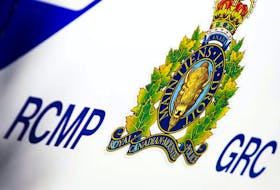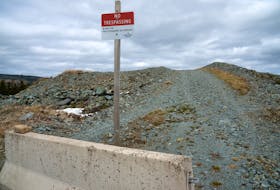GANDER, NL – There’s a good chance a message in a bottle will end up somewhere in Europe if it can clear the shores of Newfoundland and reach the Flemish Cap.
Last week the Beacon reported on a story about a Salvage, N.L. youth’s message in a bottle making it all the way to France over an 18-month period.
The bottle’s route aligns with Department of Fisheries and Oceans Canada (DFO) science, according to Fraser Davidson, research scientist with DFO’s biological and physical oceanography section.
For some time, the department has been deploying drifter buoys to monitor current patterns. Fifty were deployed in the province’s waters over the last year and a half alone.
In tracking progress after the message in a bottle was discovered, Davidson noted that buoys drifting past Salvage were brought south by the Labrador current to the Grand Banks, where they were picked up by the north side of the Gulf Stream and moved into the North Atlantic Current – also known as the North Atlantic Drift – and continued moving east.
“Once you get past the Flemish Cap the currents are slower, but meandering, so it’s kind of like a washing machine process,” said Davidson. “There’s a lot of isolation, there’s a lot of swirling… but you know it’s headed eastward.
“It’s not a straight track to Europe, which means (the drifters) can end up anywhere along the European coast.”
The 18-month timeframe is fairly consistent with the DFO findings as well, as Davidson stated drifters have transited Newfoundland to the Faroe Islands – between Iceland and Norway – in less than 18 months, while others have taken longer.
“A bottle drifts at the top of the ocean, and our drifters have drogue socks around 10 to 15 metres,” he said. “In the bottle’s case, strong winds can accelerate it across the ocean.”
Gooseneck barnacles
The bottle also landed on the shores of France with another surprise.
A large flower-like arrangement had collected around the neck and head of the bottle.
This, according to Philip Sargent, a science technician with DFO, is known as a gooseneck barnacle.
Although very different in appearance, barnacles are crustaceans, related to shrimp, crab and lobster.
“Normal barnacles along the shoreline are white knobs that encrust rocks – this species is a bit different and tends to be more offshore,” said Sargent. “They actually have a stalk, kind of rubbery, that attaches to the base. The upper part is the shell which opens up and they have feeding appendages (to feed on plankton).”
He said this type of barnacle will affix itself to anything floating in the ocean.
“They are cosmopolitan, so they can be found anywhere in the ocean, but I would assume in coastal waters they probably wouldn’t attach. From what I’ve seen they are more offshore, in the middle of the Atlantic is probably where the bottle picked it up.”








